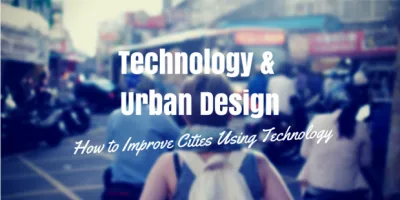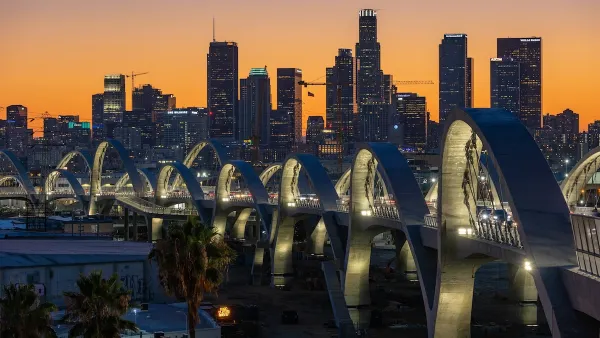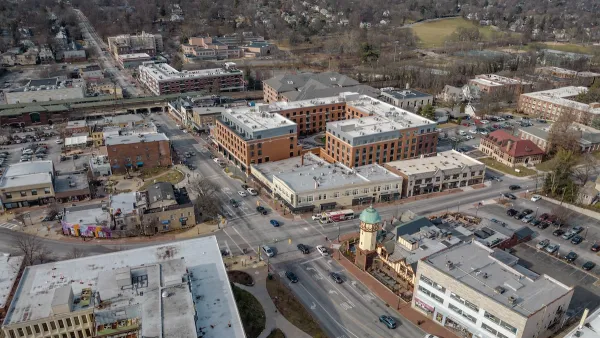Technology is a great benefit for urban design and urban planning. Not only does it help boost productivity for design and urban planning teams, but it also increases team collaboration, citizen engagement, attention to detail, and accuracy.

Technology is a great gain for those working in urban design and urban planning. Not only does it help boost productivity for design and urban planning teams, but it also increases team collaboration, citizen engagement, attention to detail, accuracy when laying out a city, and data-driven processes. With rapid growth, climate change, expanding urban lines, and gentrification, it is important that design teams look at the whole picture.
The right tools make life easier for the urban planner’s team. They facilitate workflow and collaboration. In today’s fast-moving business world, communication and collaboration is key.
How Technology Improves Urban Design

Sustainability
Using the right tools can help planners establish the best way to improve a community’s sustainability. For example, through the use of apps like Environmental Impact Calculator that provides information on time by mode and number of calories that will be burned to get from one destination to another, developers can determine how to create an urban space that is less reliant on fossil fuel vehicles and more accessible to pedestrians and bicyclists. Reducing reliance on cars decreases pollution and energy consumption. It also inspires a feeling of community and makes life convenient for city dwellers.
Connectivity
By incorporating technology into urban design, a greater level of connectivity can be achieved for residential and commercial settings. It enables one to work from home and other locations, reducing commute times and improving traffic conditions. Furthermore, the development of co-working spaces, Internet-based clubs, etc., can bring people together like never before. With an eye on how people use technology within an urban setting, designers and planners can facilitate connections.
Planning
Back when we didn’t have technology and data, urban centres were often poorly planned and haphazardly built. Through the use of modern technology and open data in urban design, planners can better determine how best to string together the different elements of urban planning to create inclusive communities. Tools such as the National Equity Atlas and Metro Pulse help planners and designers make sense of demographic data, racial equity, and economic benefits. By using services like these ones planners, urban designers, and architects can spend more time on planning tasks and confidently create a space that will be inclusive, vibrant and in demand – both for residents and for businesses. Better data helps create better community.
Collaboration & Sharing Economy
Cities as platforms for sharing and collaborating is emerging as powerful concept and is gaining traction in part through open data, open governments and in part through the increase in remote work. No longer is work based in just one location. New technologies and applications are providing participatory and collaborative platforms for planners to tap into resources from around the globe. We can learn from those in Hong Kong about how to best use the space we’re given to meet the needs of our population, those in San Francisco about how to cultivate a local culture, and those in New York about how to offer citizens a city that is more easily navigated by foot. Data is the launching pad for the sharing economy and the web is the vessel for carrying the data to planners.
Urban Design Needs Technology
When you’re planning a city, you will find it hard do so successfully without technology. It helps in the successful design and layout of urban centres, and incorporating it effectively can boost creativity, connections and trust with a given community.
What sort of impact has technology had on your urban design projects? I would love to hear your thoughts. Let me know in the comments section below or Tweet to @simolapointe.
PS. If you liked this post, you might enjoy our 3Pikas/Civicly newsletter. Receive each new post delivered right to your inbox! Sign up here.
FULL STORY: 5 Ways Technology Can Improve Urban Design

Analysis: Cybertruck Fatality Rate Far Exceeds That of Ford Pinto
The Tesla Cybertruck was recalled seven times last year.

National Parks Layoffs Will Cause Communities to Lose Billions
Thousands of essential park workers were laid off this week, just before the busy spring break season.

Retro-silient?: America’s First “Eco-burb,” The Woodlands Turns 50
A master-planned community north of Houston offers lessons on green infrastructure and resilient design, but falls short of its founder’s lofty affordability and walkability goals.

Test News Post 1
This is a summary

Analysis: Cybertruck Fatality Rate Far Exceeds That of Ford Pinto
The Tesla Cybertruck was recalled seven times last year.

Test News Headline 46
Test for the image on the front page.
Urban Design for Planners 1: Software Tools
This six-course series explores essential urban design concepts using open source software and equips planners with the tools they need to participate fully in the urban design process.
Planning for Universal Design
Learn the tools for implementing Universal Design in planning regulations.
EMC Planning Group, Inc.
Planetizen
Planetizen
Mpact (formerly Rail~Volution)
Great Falls Development Authority, Inc.
HUDs Office of Policy Development and Research
NYU Wagner Graduate School of Public Service




























